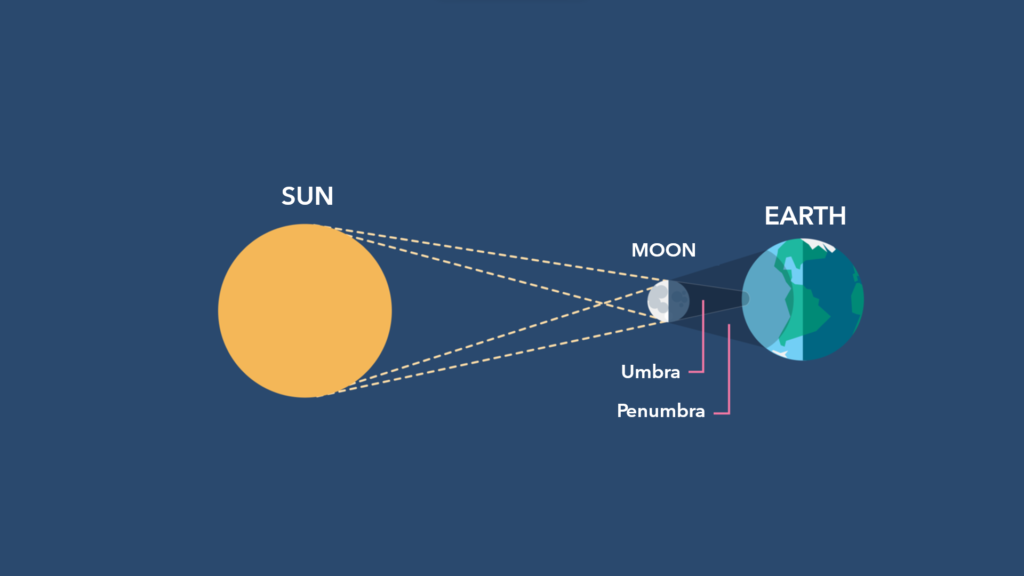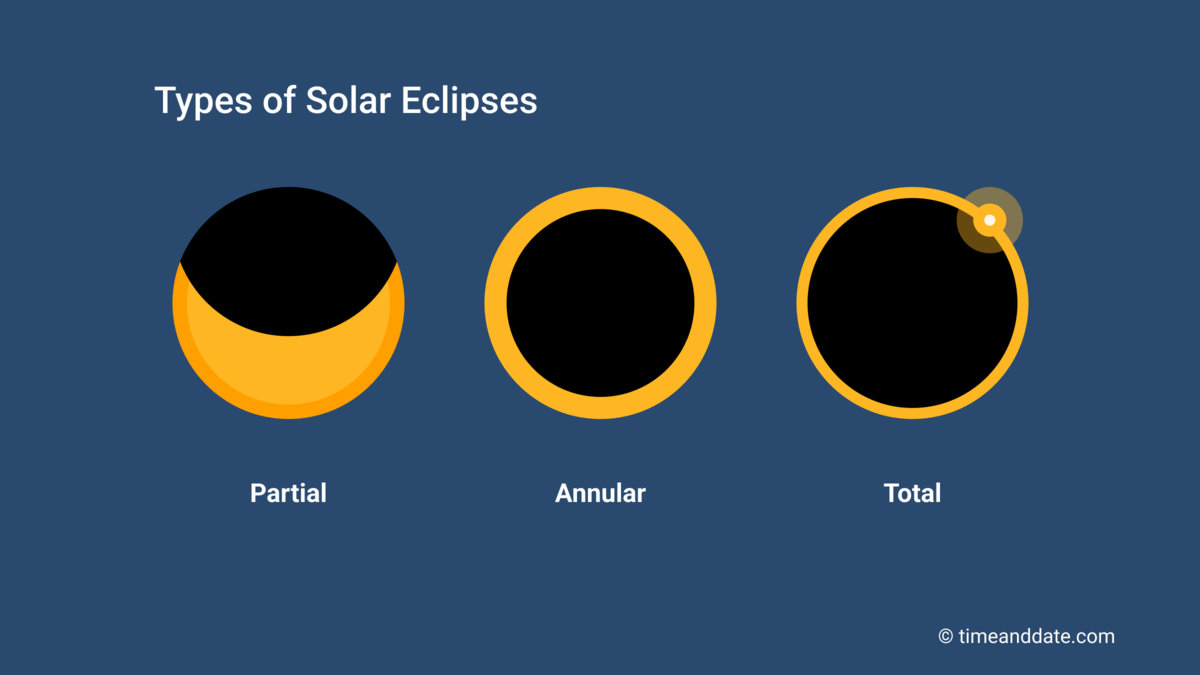While parts of the United States, Central and South America see a total solar eclipse on Saturday, October 13th, 2023, Trinidad and Tobago will be able to see a different type of eclipse during the afternoon.
What is a solar eclipse?

A solar eclipse is a fairly rare astronomical event where the moon, specifically the New Moon, moves between the Sun and the Earth, blocking out the Sun’s rays and casting a shadow on parts of Earth.
While the Moon’s shadow is not big enough to engulf the entirety of Earth, it is limited to a certain area, which changes during the course of the eclipse as both the Moon and Earth is in constant motion. Earth continuously rotates around its axis while it orbits the Sun, and the Moon orbits Earth.
Solar eclipse types

According to timeanddate.com, There are 4 different types of solar eclipses. How much of the Sun’s disk is eclipsed and the eclipse magnitude depends on which part of the Moon’s shadow falls on Earth.
- Partial solar eclipses occur when the Moon only partially obscures the Sun’s disk and casts only its penumbra on Earth. This is what Trinidad and Tobago saw on August 21st, 2017, and will see again on October 14th, 2023.
- Annular solar eclipses take place when the Moon’s disk is not big enough to cover the entire disk of the Sun, and the Sun’s outer edges remain visible to form a ring of fire in the sky. An annular eclipse of the Sun takes place when the Moon is near apogee and the Moon’s antumbra falls on Earth. This type of eclipse will be visible on October 14th, 2023, but across the Americas, from the United States through Mexico, Central America, Columbia, and Brazil.
- Total solar eclipses happen when the Moon completely covers the Sun, and they can only take place when the Moon is near perigee, the point of the Moon’s orbit closest to Earth. You can only see a total solar eclipse if you’re in the path where the Moon casts its darkest shadow, the umbra.
- Hybrid Solar Eclipses, also known as annular-total eclipses, are the rarest type. They occur when the same eclipse changes from an annular to a total solar eclipse, and/or vice versa, along the eclipse’s path.
Who will be able to see it?

The path of totality will be tracked from the United States through Mexico, Central America, Columbia, and Brazil. From as far north as Alaska to as far south as central Chile and Argentina will be able to see a partial solar eclipse.

Specifically for Trinidad and Tobago, southwestern Trinidad is set to experience the longest eclipse, beginning at 1:12 PM and ending at 4:17 PM, with the maximum eclipse occurring at 2:51 PM with 54.72% of the Sun covered. The further northeast you are located in T&T, the less of the Sun will be covered (a marginal difference of 0-5%), and the eclipse will begin marginally later (1:15 PM for northeastern Tobago). timeanddate.com has an excellent resource to view the exact timing of the eclipse in your area.
Will the weather cooperate?
During this time of day during the Wet Season, Trinidad and Tobago, particularly across western and hilly areas of the country, experiences peak cloudiness.
On Saturday, October 14th, 2023, during the afternoon, partly cloudy to mostly cloudy skies are forecast, particularly across western and northern areas of Trinidad, with isolated showers and the odd thunderstorm. The good news is that the partial eclipse will last for just over three hours, but given the peak is at 2:51 PM, western areas of Trinidad will, unfortunately, have substantial cloud cover.
How can you see the solar eclipse?
All you need to do is look up, but definitely not with your naked eye, and regular sunglasses won’t cut it either. Special eclipse glasses are required, or #14 Welder’s Glasses.
An alternative for experiencing the fiery eclipse would be creating a projector box using cardboard and aluminum foil.


Materials
Cardboard box big enough to stick your head in
Tape
Box cutter or scissors
Empty soda can
Push pin
White paper
Directions:
Cut a small hole (less than 1 inch by 1 inch) on one of the short sides of the box, preferably higher up and centered.
Tape a sheet of white paper on the end opposite the small hole.
Cut an empty aluminum pop can using a box cutter or scissors to make a strip of aluminum about 2 inches by 2 inches or a little larger.
Put the aluminum strip on a piece of cardboard and carefully puncture it with a thumb tack or push pin. This makes the hole.
Center the aluminum strip over the small hole in the cardboard box and tape it down.
To use the eclipse box, put your head inside the box (yes, really) with your back to the sun.
Orient the box so that the light from the pinhole falls off the white paper, and you should see an image of the sun about a centimeter across.
This will show the bite of the moon out of the sun during the eclipse. You can adjust the flaps and tape any holes in the top to keep out as much light as possible.
You can read more about eclipse safety via NASA, and if you’d like to use your phone to take a picture, see tips here. The Caribbean Insitute of Astronomy (CARINA) will also have a viewing event at the VELA Observatory, located in Caroni, Trinidad.









